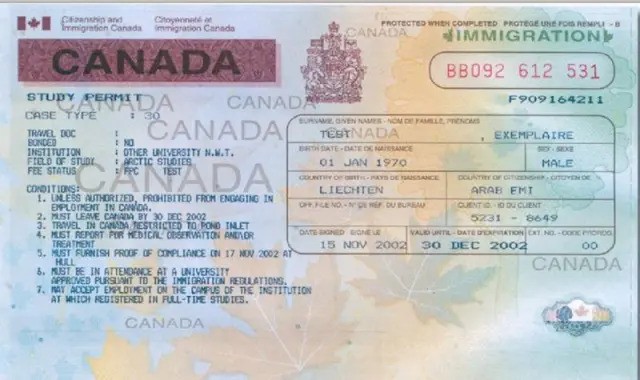A work permit visa in Canada allows foreign nationals to legally work in the country for a specific period. Canada is a popular destination for skilled workers, offering a range of work visa options depending on the applicant’s profession, nationality, and the type of work they will be doing. Here's a breakdown of what you need to know about Canada's work permit visa process
Types of Work Permits
1. Employer-Specific Work Permit
This type of permit is tied to a specific employer, location, and job. It is issued based on an employment offer from a Canadian company and usually requires a Labour Market Impact Assessment (LMIA) to prove that no Canadian citizen or permanent resident is available to fill the position.
2. Open Work Permit
An open work permit allows you to work for any employer in Canada (with some exceptions). This type of permit is typically granted to spouses of skilled workers or international students and refugees, among others.
Eligibility Requirements
👉A valid job offerfrom a Canadian employer is essential for most work permits.
👉Depending on the job, the employer may need to obtain an LMIA from Employment and Social Development Canada (ESDC), proving that hiring a foreign worker will not negatively affect the Canadian labor market.
👉Applicants must demonstrate that they will leave Canada when their work permit expires unless they are on a path to permanent residency.
👉They should also show proof of funds to support themselves and their family in Canada, good health (a medical exam may be required), and a clean criminal record.
Application Process
1. Job Offer and LMIA: The first step involves securing a job offer from a Canadian employer. If required, the employer must get a positive LMIA.
2. Submit an Application: Once the job offer is confirmed and LMIA is approved (if necessary), you can apply for a work permit either online or through a visa application center. This application usually involves providing personal documents, including your passport, job offer, and proof of qualifications.
3.Biometrics and Medical Exam: Depending on your nationality, you may be asked to provide biometrics (fingerprints and photo) and complete a medical exam.
4. Wait for Processing: Processing times can vary based on the country you're applying from. It’s advisable to apply several months in advance.
5. Receive Work Permit: Once your application is approved, you will receive a letter of introduction and a work permit upon arrival in Canada.
Working in Canada as a Pathway to Permanent Residency
Many foreign workers in Canada use the experience gained through a work permit as a stepping stone towards permanent residency. Programs like the Canadian Experience Class (CEC) under the Express Entry system allow temporary workers to apply for permanent residency after gaining Canadian work experience.
Special Categories
👉Post-Graduation Work Permit (PGWP): International students who graduate from a Canadian institution can apply for an open work permit through this program, which allows them to work for any employer for up to three years, depending on the length of their study program.
👉Global Talent Stream: For highly skilled tech workers, this fast-tracked work permit program allows employers to hire international talent in fields like software development and engineering.
Getting a work permit visa in Canada can open doors to valuable work experience and the opportunity to eventually settle in the country. The process, while detailed, is designed to ensure that foreign workers contribute positively to the Canadian economy while also maintaining fair opportunities for Canadian residents. It’s important to follow the guidelines carefully and stay updated on any changes in immigration policies.

.jpg)
